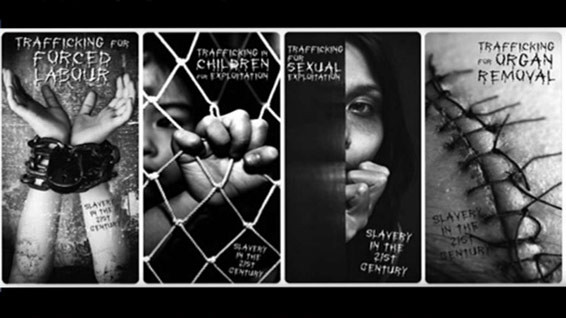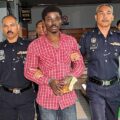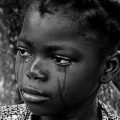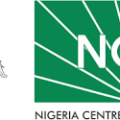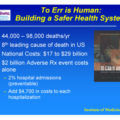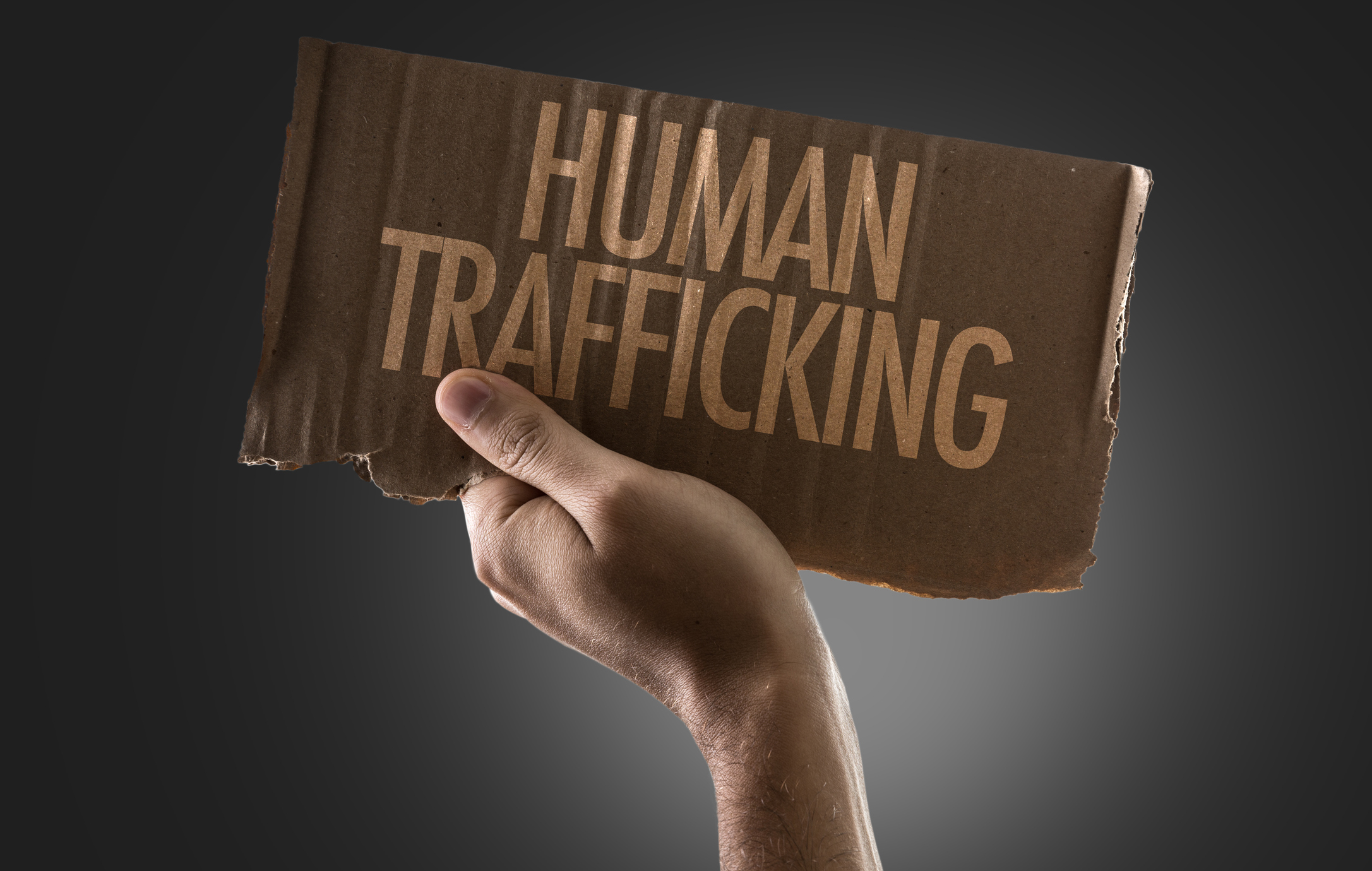
Human trafficking, also called trafficking in persons, is defined as a form of modern-day slavery involving the illegal transport of individuals by force or deception for the purpose of labour, sexual exploitation, or activities in which others benefit financially. Human trafficking is a global problem affecting people of all ages. It is estimated that approximately 1,000,000 people are trafficked each year globally and that between 20,000 and 50,000 are trafficked into the United States, which is one of the largest destinations for victims of the sex-trafficking trade.
Although human trafficking is recognized as a growing international phenomenon, a uniform definition has yet to be internationally adopted. The United Nations (UN) divides human trafficking into three categories—sex trafficking, labour trafficking, and the removal of organs—and defines human trafficking as the induction by force, fraud, or coercion of a person to engage in the sex trade, or the harbouring, transportation, or obtaining of a person for labour service or organ removal. Though the United States does not acknowledge the removal of organs in its definition, it does recognize sex and labour trafficking and describes human trafficking as the purposeful transportation of an individual for exploitation.
Trafficking in persons is a serious crime and a grave violation of human rights. Every year, thousands of men, women and children fall into the hands of traffickers, in their own countries and abroad. Almost every country in the world is affected by trafficking, whether as a country of origin, transit or destination for victims. UNODC, as guardian of the United Nations Convention against Transnational Organized Crime (UNTOC) and the Protocols thereto, assists States in their efforts to implement the Protocol to Prevent, Suppress and Punish Trafficking in Persons (Trafficking in Persons Protocol).
The Trafficking Scheme
Human traffickers often create transnational routes for transporting migrants who are driven by unfavourable living conditions to seek the services of a smuggler. Human trafficking usually starts in origin countries—namely, Southeast Asia, eastern Europe, and sub-Saharan Africa—where recruiters seek migrants through various mediums such as the Internet, employment agencies, the media, and local contacts. Middlemen who recruit from within the origin country commonly share the cultural background of those migrating. Migrants view the services of a smuggler as an opportunity to move from impoverished conditions in their home countries to more stable, developed environments.
Because such circumstances make it difficult for victims to obtain legitimate travel documents, smugglers supply migrants with fraudulent passports or visas and advise them to avoid detection by border-control agents. Transporters, in turn, sustain the migration process through various modes of transportation: land, air, and sea. Although victims often leave their destination country voluntarily, the majority are unaware that they are being recruited for a trafficking scheme. Some may be kidnapped or coerced, but many are bribed by false job opportunities, passports, or visas. Transporters involved in trafficking victims from the origin country are compensated only after they have taken migrants to the responsible party in the destination country. Immigration documents, whether legitimate or fraudulent, are seized by the traffickers. After this, victims are often subjected to physical and sexual abuse, and many are forced into labour or the sex trade in order to pay off their migratory debts.
The cause of human trafficking stems from adverse circumstances in origin countries, including religious persecution, political dissension, lack of employment opportunities, poverty, wars, and natural disasters. Another causal factor is globalization, which has catapulted developing countries into the world’s market, increasing the standard of living and contributing to the overall growth of the global economy. Unfortunately, globalization is a double-edged sword in that it has shaped the world’s market for the transportation of illegal migrants, affording criminal organizations the ability to expand their networks and create transnational routes that facilitate the transporting of migrants.
What are the types of human trafficking?
According to the InterPol there are 5 and not 3 types of human trafficking, these include;
Trafficking for forced labour
Victims of this widespread form of trafficking come primarily from developing countries. They are recruited and trafficked using deception and coercion and find themselves held in conditions of slavery in a variety of jobs. Victims can be engaged in agricultural, mining, fisheries or construction work, along with domestic servitude and other labour-intensive jobs.
Trafficking for forced criminal activities
This form of trafficking allows criminal networks to reap the profits of a variety of illicit activities without the risk. Victims are forced to carry out a range of illegal activities, which in turn generate income. These can include theft, drug cultivation, selling counterfeit goods, or forced begging. Victims often have quotas and can face severe punishment if they do not perform adequately.
Trafficking in women for sexual exploitation
This prevalent form of trafficking affects every region in the world, either as a source, transit or destination country. Women and children from developing countries, and from vulnerable parts of society in developed countries, are lured by promises of decent employment into leaving their homes and travelling to what they consider will be a better life. Victims are often provided with false travel documents and an organized network is used to transport them to the destination country, where they find themselves forced into sexual exploitation and held in inhumane conditions and constant terror.
Trafficking for the removal of organs
In many countries, waiting lists for transplants are very long, and criminals have seized this opportunity to exploit the desperation of patients and potential donors. The health of victims, even their lives, is at risk as operations may be carried out in clandestine conditions with no medical follow-up. An ageing population and increased incidence of diabetes in many developed countries is likely to increase the requirement for organ transplants and make this crime even more lucrative.
People smuggling
Closely connected to human trafficking is the issue of people smuggling, as many migrants can fall victim to forced labour along their journey. Smugglers may force migrants to work in inhumane conditions to pay for their illegal passage across borders.
7 Facts About Human Trafficking
Here are 7 facts about human trafficking you may not know;
The real definition of human trafficking. Human trafficking is the act of recruiting, harboring, transporting, providing or obtaining a person for compelled labor or commercial sex acts through the use of force, fraud or coercion. It’s important to note, though, that human trafficking can include, but does not require, movement. You can be a victim of human trafficking in your hometown. At the heart of human trafficking is the traffickers’ goal of exploitation and enslavement.
Types of human trafficking. Sexual exploitation and forced labor are the most commonly identified forms of human trafficking. More than half of the victims are female. Many other forms of exploitation are often thought to be under-reported. These include domestic servitude and forced marriage; organ removal; and the exploitation of children in begging, the sex trade and warfare.
Causes of human trafficking: It’s complicated. The causes of human trafficking are complex and interlinked, and include economic, social and political factors. Poverty alone does not necessarily create vulnerability to trafficking, but when combined with other factors, these can lead to a higher risk for being trafficked. Some of those other factors include: corruption, civil unrest, a weak government, lack of access to education or jobs, family disruption or dysfunction, lack of human rights, or economic disruptions.
It’s a lucrative industry. Along with illegal arms and drug trafficking, human trafficking is one of the largest international crime industries in the world. A report from the International Labor Organization (ILO) says forced labor generates $150 billion in illegal profits per year. Two-thirds of that money came from commercial sexual exploitation, while the rest is from forced economic exploitation, including domestic work, agriculture, child labor and related activities.
Believe it. Human trafficking is everywhere. Every continent in the world has been involved in human trafficking. In the United States, it is most prevalent in Texas, Florida, New York and California. Human trafficking is both a domestic and global crime, with victims trafficked within their own country, to neighboring countries and between continents. Victims of trafficking can be of any age and any gender. Women and children are often used for sexual exploitation, while men are more likely to be used for forced labor. Globally, about one in five victims of human trafficking are children. Children are also exploited for the purposes of forced begging, child pornography or child labor. Their smaller hands may also be used in tasks like sewing or untangling fishing wire.
We need to do more for migrants. All over the world, people are on the move. Many have been forced to become migrants because of conflict, a changing climate and economic instability. Some of these migrants are vulnerable to human trafficking. A United Nations rights expert is warning a new approach is needed.“Trafficking in people in conflict situations is not a mere possibility but something that happens on a regular basis,” said Maria Grazia Giammarinaro, the United Nation’s special rapporteur on human trafficking, in a speech to the U.N. General Assembly. “This means anti-trafficking measures must be integrated into all humanitarian action and all policies regarding people fleeing conflict.”
How to stop human trafficking: The three P’s, plus a little more
The U.S. government is at the forefront of efforts to address human trafficking. Its policy surrounds the three P’s: prevent trafficking, protect victims and prosecute traffickers. The number of convictions for human trafficking is increasing, but unfortunately not proportionately to the growing awareness and extent of the problem. There are several reasons for that. There is an absence of anti-trafficking legislation in some countries. Sometimes the legislation exists, but law enforcement officials and prosecutors may not know how to use it. In some instances, victims may not cooperate with the criminal justice system because they have been threatened by a trafficker. SEE: Dangers Of Drug Trafficking


